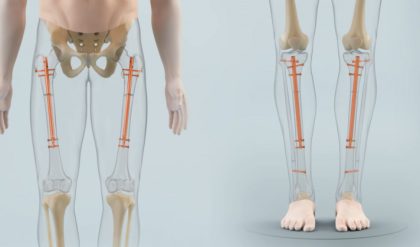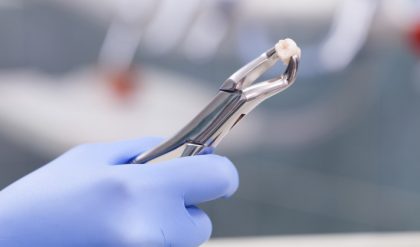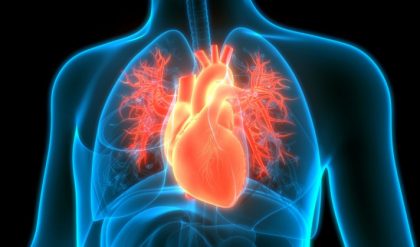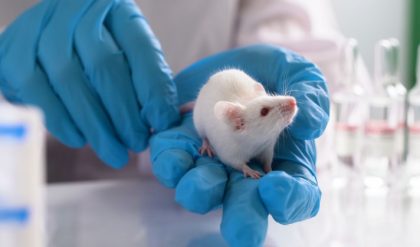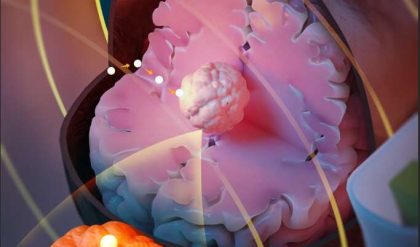Resistance Plasmids
Also referred to as antimicrobial resistance plasmids, resistance plasmids are a type of plasmids that carry genes that play an important role in antibiotic resistance. They are also highly involved in bacterial conjugation by producing conjugation pili which transfer the R plasmid from one bacterium to another.
Resistance plasmids are divided into two main groups that include:
Narrow-host-range group – Often replicated within a single species.
Broad-host-range group – Easily transferred between bacteria species. This group of resistance plasmids has been shown to carry a range of antibiotic resistance genes. Following the transfer of antibiotic resistance genes to drug-sensitive bacteria, this can cause the bacteria to develop resistance towards a variety of drugs.
Degradative Plasmids
Compared to other types of plasmids, degradative plasmids enable the host organism to degrade/break down xenobiotic compounds. Also referred to as recalcitrant substances, xenobiotic compounds include a range of compounds released into the environment as a result of human actions and are therefore not naturally occurring or common in nature.
Hosts of degradative plasmids are found in groups IncP-1, IncP-7, and IncP-9 and include such species as Ochrobactrum anthropi, Rhizobium sp, Burkholderia hospita, Escherichia coli, and Pseudomonas fluorescens among many others.
Because of the ability of the host to degrade xenobiotic compounds, researchers have attempted to use the plasmids to degrade various contaminating substances in the environment. However, given that this has not proved effective, research studies continue to be conducted to determine how to use various indigenous bacteria (as hosts of degradative plasmids) for degradation of such compounds.
While degradative plasmids contribute to the degradation of xenobiotic compounds, their behavior varies depending on a number of factors such as the capacity for replication and stability. For instance, plasmids found in IncP-1 group have not only been shown to have a broad host range, but also high transfer frequency.
The differences in the behavior of different degradative plasmids have therefore been shown to result in different behaviors between them and their respective hosts.
* The use of biodegradative microorganisms for the purposes of removing xenobiotic compounds from contaminated environments is known as Bioaugmentation.
* Whereas IncP-1 plasmids have a broad range of hosts, IncP-7 has been shown to have a narrow host range. On the other hand, IncP-9 has an intermediate host range.
Fertility Plasmids
Like many other plasmids, fertility plasmids (F plasmid) have a circular structure and measures about 100 kb.
Some of the main parts of the F plasmid include:
- Transposable element (IS2, 1S3, and Tn1000)
- Replication sites (RepFIA, RepFIB, and RepFIC)
- Origin of conjugative transfer (oirT)
- Replication origin regions
F plasmid plays an important role in reproduction given that they contain genes that code for the production of sex pilus as well as enzymes required for conjugation. F plasmid also contains genes that are involved in their own transfer. Therefore, during conjugation, they enhance their own transfer from one cell to another.
Whereas the cells that process the F plasmids are referred to as donors, those that lack this factor are the recipients. On the other hand, the plasmids that enhance the ability of the host cell to behave like a donor are known as the transfer factor.
During conjugation, the donor cell (bacteria) with sex pili (1-3 sex pili) binds to a specific protein on the outer membrane of the recipient thus initiating the mating process.
Following the initial binding, the pili retract thus allowing the two cells to bind together. This is then followed by the transfer of DNA from the donor to the recipient and consequently the transfer of the F plasmid. As a result, the recipient acquires the F factor and gains the ability to produce sex pilus involved in conjugation.
* During conjugation, only DNA is passed from the donor to the recipient. Therefore, cytoplasm and other cell material are not transferred.
* Sexual pili (sex pili) are tiny rod-like structures that allow the F-positive (cells that have the F factor) bacterial cells to attach to the F-negative (cells lacking the pili) female to promote conjugative transfer.
Col Plasmids
Col plasmids confer to bacteria the ability to produce toxic proteins known as colicines. Such bacteria as E. coli, Shigella and Salmonella use these toxins to kill other bacteria and thus thrive in their respective environments.
There are different types of Col plasmids in existence that produce different types of colicines/ colicins. A few examples of Col plasmids include Col B, Col E2 and E3. Their differences are also characterized by differences in their mode of action.
For instance, whereas Col B causes damage to cell membrane of other bacteria (lacking the plasmid) Col E3 has been shown to induce degradation of the nucleic acids of the target cells.
Like fertility plasmids, some of the Col plasmids have been shown to carry elements that enhance their transmission from one cell to another. Therefore, through conjugation or the mating process, particularly for cells with the F factor (fertility plasmids) the Col plasmids can be transferred from one cell (donor) to another (recipient). As a result, the recipient acquires the ability to produce toxins that kill or inhibit the growth of the target bacteria lacking the plasmid.
* Colicins/colicines belong to a group of toxins known as bacteriocins.
* These toxins affect the target bacteria by affecting such processes as replication of DNA, translation and energy metabolism among others.
Virulence Plasmids
Compared to other harmless bacteria, bacteria that tend to be pathogenic in nature carry genes for virulence factors that allow them to invade and infect their respective hosts.
For some of these bacteria, the virulence factors are the result of the organisms’ own genetic material. However, for others, this is as a result of genetic elements from extra-chromosomal DNA. Although there are other sources of such elements, e.g. transposons, plasmids are some of the most common mobile genetic elements.
With regards to pathogenicity, virulence plasmids play an important role given that they can help bacteria effectively adapt to their respective environments. This is because the virulence plasmid can enable the organism to express an array of virulence-associated functions thus providing the organism with more advantageous characteristics to thrive in their environment.
Like other types of plasmids, virulence plasmids can also be transmitted from one bacterium to another. Apart from the virulence gene, plasmids have also been shown to carry other important elements that enhance transmission and maintenance.
For this reason, they are larger in size but low in numbers. This ensures that they do not cause additional burden to the organism during cell division.
Typically, cell division and cell maintenance require the use of energy. By having low numbers of virulence plasmids, the cells are spared significant metabolic burden that would be required for maintenance and genome duplication of numerous plasmids.
Some of the other types of plasmids include:
- Recombinant plasmids – Plasmids that have been altered in the laboratory and introduced into the bacteria for the purposes of studies
- Crptic plasmids – No known functions
- Metabolic plasmids – Enhance metabolism of the host
- Conjugative plasmids – Promote self-transfer
- Suicide plasmids – Fail to replicate when transferred from one cell to another
Plasmid Vector
A vector refers to any piece of molecule that contains genetic material that can be replicated and expressed when transferred into another cell. Based on this definition, it is possible to see why the words “vector” and “plasmids” are sometimes interchanged. However, this is not to say that all plasmids are vectors.
One of the primary characteristics of plasmid vectors is that they are small in size. Apart from their size, they are characterized by an origin of replication, a selective marker as well as multiple cloning sites.
The ideal plasmid vectors have high copy numbers inside the cell. As such, it ensures high numbers of the target gene for cloning purposes. This also ensures that the gene of interest is increased during genomic division. In addition, the plasmid can have a marker gene as the visual marker to help determine whether cloning was successful.
Because of their multiple cloning sites, plasmids have been shown to be some of the best vectors for cloning. Because of this characteristic, it is possible for restriction enzymes to cleave various regions of the plasmid for cloning.
Over the years, using these vectors has allowed for recombinant DNA to be introduced into host cells for study purposes. For instance, through this type of cloning, it has become possible for researchers to sequence the genome of a range of species, study the expression of genes and even observe various cellular mechanisms.
* While smaller plasmids are capable of carrying long DNA segments, reduced size can also help remove non-essential genes that are not required for cloning.
Plasmid Isolation
In order to obtain purified plasmid DNA for such procedures as cloning, PCR and transfection, plasmid isolation has to be performed. The process involves using a number of techniques to obtain the plasmid DNA from host cells in order to use it in molecular biology.
Plasmid isolation involves the following steps:
Cell growth (growth of bacterial cells) – This involves growing the bacteria that contain plasmid in a specific shaken culture. Here, given antibiotics may be used to prevent the growth of other undesired bacteria.
Centrifugation – Bacterial growth is followed by centrifugation in order to pellet the cells. Once the supernatant has been removed, then isolation of plasmids can begin.
One of the most common techniques for isolation is the classical method that is sometimes referred to as alkaline lysis.
This involves the following steps:
- Suspension of the pellet in an isotonic solution – The bacterial pellet obtained from centrifugation is re-suspended in an isotonic solution (ethylene diamine tetraacetate) which prevents nuclease activity
- Alkaline lysis of the cells – This involves cell lysis by using sodium dodecyl sulfate to disintegrate the lipid structure on the cell membrane
- Precipitation of dissolved proteins using a solution of acidic potassium acetate
- Sedimentation – centrifugation is used for sedimentation
- Purification – A mixture of phenol and chloroform is used for purification of the plasmid DNA. This step removes protein content
- Add ethanol for precipitation (to be sedimented through centrifugation)
- Wash the solution with 70 percent ethanol (to remove salt content)
- Centrifuge to sediment plasmid DNA
- Dissolve in TE solution and store

